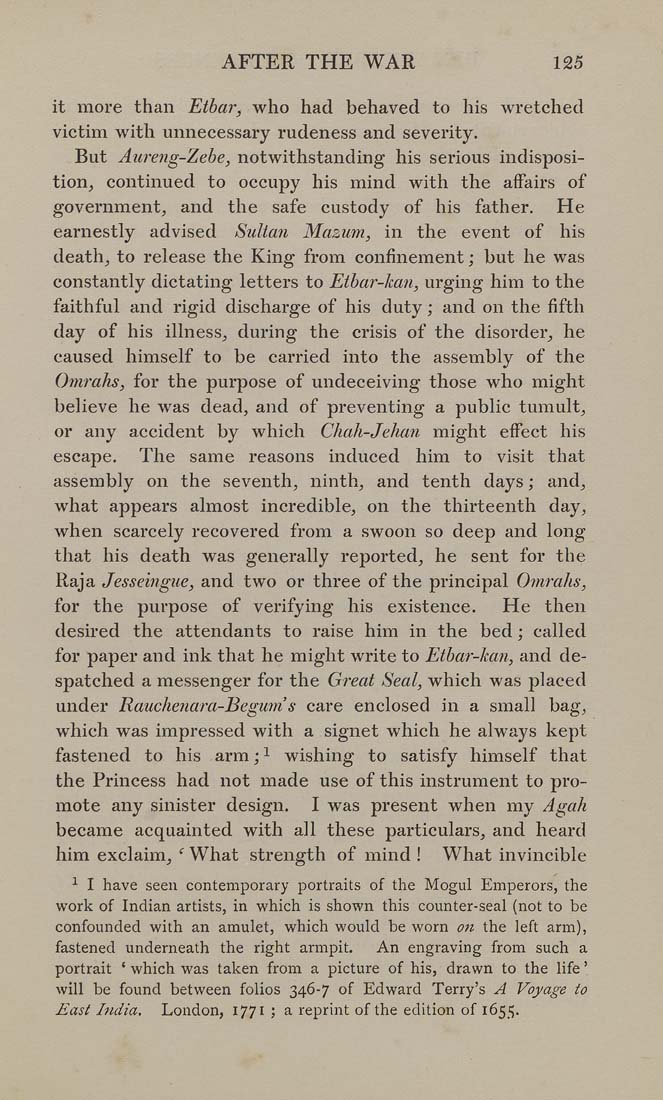AFTER THE WAR 125
it more than Etbar, who had behaved to his wretched
victim with unnecessary rudeness and severity.
But Aureng-Zebe, notwithstanding his serious indisposi¬
tion, continued to occupy his mind with the affairs of
government, and the safe custody of his father. He
earnestly advised Sultan Mazum, in the event of his
death, to release the King from confinement; but he was
constantly dictating letters to Etbar-kan, urging him to the
faithful and rigid discharge of his duty; and on the fifth
day of his illness, during the crisis of the disorder, he
caused himself to be carried into the assembly of the
Omrahs, for the purpose of undeceiving those who might
believe he was dead, and of preventing a public tumult,
or any accident by which Chah-Jehan might effect his
escape. The same reasons induced him to visit that
assembly on the seventh, ninth, and tenth days; and,
what appears almost incredible, on the thirteenth day,
when scarcely recovered from a swoon so deep and long
that his death was generally reported, he sent for the
Raja Jesseingue, and two or three of the principal Omrahs,
for the purpose of verifying his existence. He then
desired the attendants to raise him in the bed; called
for paper and ink that he might write to Etbar-kan, and de¬
spatched a messenger for the Great Seal, which was placed
under Rauchenara-Begum's care enclosed in a small bag,
which was impressed with a signet which he always kept
fastened to his arm;! wishing to satisfy himself that
the Princess had not made use of this instrument to pro¬
mote any sinister design. I was present when my Agah
became acquainted with all these particulars, and heard
him exclaim, ' What strength of mind ! What invincible
' I have seen contemporary portraits of the Mogul Emperors, the
work of Indian artists, in which is shown this counter-seal (not to be
confounded with an amulet, which would be worn on the left arm),
fastened underneath the right armpit. An engraving from such a
portrait ' which was taken from a picture of his, drawn to the life'
will be found between folios 346-7 of Edward Terry's A Voyage to
East India. London, 1771 ; a reprint of the edition of 1655.
|








